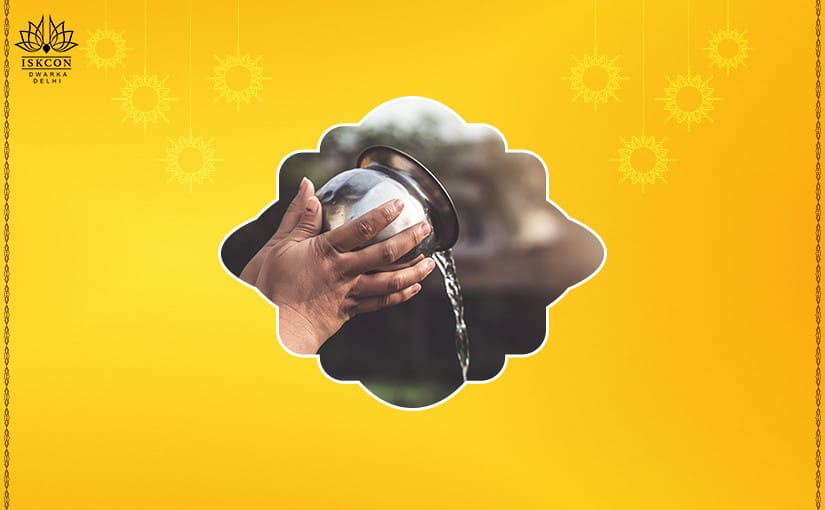In the sacred month when the sun moves into Mesha Rasi (Aries), marking the beginning of the new year in many calendars, devout practitioners embark on a spiritually enriching journey known as Keshava Vrata. This month-long observance calls upon individuals to engage in acts of austerity, charity, and devotion to honor the divine. Central to this observance is the practice of Jala Dana, offering water as a form of donation. In this blog, we delve into the intricacies of Jala Dana, exploring the rituals and Hindu practices associated with this sacred act.
Preparing the Water for Donation
The first step in performing Jala Dana is preparing the water intended for donation. Water, the essence of life, has profound significance in Hindu tradition, symbolizing purity, renewal, and divine grace. Devotees meticulously collect water, ensuring its cleanliness and sanctity. Once gathered, the water is consecrated through prayers and mantras, infusing it with spiritual energy and blessings. This consecrated water is a potent medium through which devotees express their reverence and devotion to the divine.
Identifying Individuals or Communities in Need
Central to the ethos of Jala Dana is the spirit of compassion and altruism. Before commencing the ritual, devotees conscientiously identify individuals or communities needing assistance. Whether it be the parched earth yearning for nourishment or fellow beings facing adversity, offering water transcends boundaries, embracing all sentient beings as part of the divine cosmic order. Through discernment and empathy, practitioners seek to alleviate suffering and foster harmony in the world.
Conducting the Ritual of Offering Water
With water prepared and beneficiaries identified, devotees perform the sacred water offering. Adhering to the tenets of Keshava Vrata, practitioners engage in acts of self-discipline and devotion, immersing themselves in the divine presence. As the sun rises, casting its radiant light upon the earth, devotees gather in reverence, offering prayers and invocations to the Lord. With hearts ablaze with devotion, they pour forth the consecrated water, symbolizing their surrender to the divine will and commitment to service.
Invoking Blessings and Intentions During Jala Dana
In the sanctified space of Jala Dana, devotees invoke blessings and intentions, imbuing each droplet of water with divine grace and benevolence. Through heartfelt prayers and mantras, they pray the Lord to shower blessings upon the recipients, granting them strength, solace, and spiritual upliftment. With each offering, devotees reaffirm their connection to the cosmic order, recognizing the interconnectedness of all beings and the omnipresence of the divine.
Organizing the Process of Distributing Water
As the ritual of Jala Dana unfolds, devotees meticulously organize the process of distributing water, ensuring that it reaches those in need efficiently and compassionately. Whether through community gatherings, charitable initiatives, or acts of personal service, practitioners endeavor to extend the reach of their benevolence far and wide. Guided by the principles of dharma and seva, they seek to uplift humanity and nurture the bonds of kinship that unite all beings in the divine embrace.
Conclusion
In the sacred month of Keshava Vrata, the practice of Jala Dana serves as a beacon of hope and compassion, illuminating the path of selflessness and devotion. As devotees come together to offer water in the service of the divine, they embody the timeless values of charity, humility, and love. Through the transformative power of Jala Dana, they not only quench the body’s thirst but also nourish the soul, forging bonds of kinship and solidarity that transcend the limitations of time and space. May the sacred waters of Jala Dana flow ceaselessly, carrying forth the blessings of the divine and the boundless compassion of the human heart.
Keshava Vrata starts; for one month one should control the senses, sleep on the earth, bath twice daily in a river, worship the Lord, and give cloth, sugar, sesame, rice, and gold to the Brahmanas. If one worships Madhsudana in this month one gains the benefits of one year of worship.
While Keshava Vrata lasts one may hang a pot with a hole in it, fill it with water, and drip water over Tulasi and a Shalagrama Shila.
As it is getting hot by this time of the year in the northern hemisphere it is pleasing for the Shaligram to receive cool waters dripped upon Him. How to do this? Suspend a waterpot that has a small hole in it over Tulasi and the Shaligram and allow it to drip, In some places, they make a frame to facilitate this some will suspend the pot by a string or chain from the ceiling.
For Tulasi, this is especially done in the now hot northern hemisphere when water becomes a vital asset for the growth of Tulasi Devi. In the southern hemisphere be careful not to overwater as we come out of Summer and into Autumn.





